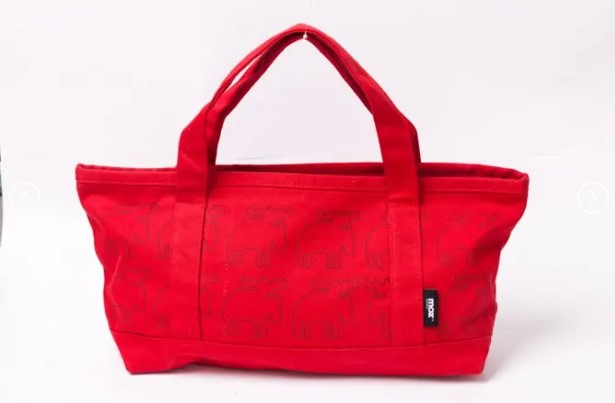A bag is always a lovely and useful decision, whether you want to freshen your accessories cabinet or you are searching for an incredible gift for someone else. When it comes to choosing between canvas and leather, each fabric has its own set of perks and cons. To help you make an informed choice for your work, travel, or casual accessories, let's delve deeper into the pros and cons of canvas and leather bags.

Properties of Leather: Durability, Look & Feel, Care and Sustainability
1. Durability
- Long-lasting: Leather is known for its strength and durability. It can withstand wear and tear, making it a popular choice for items that need to endure frequent use.
- Resistance: High-quality leather resists punctures, tears, and abrasion better than many synthetic materials.
- Aging: Leather often looks better with age, developing a patina that enhances its appearance over time.
2. Look & Feel
- Appearance: Leather has a unique, luxurious look that is difficult to replicate with synthetic materials. It comes in various finishes, from glossy to matte, and can be dyed in numerous colors.
- Texture: The feel of leather is distinct, with a smooth, supple surface that can be either soft or firm, depending on the type and treatment of the leather.
- Aromatics: Leather has a characteristic smell, often considered a sign of quality, that synthetic alternatives lack.
3. Care
- Maintenance: Proper care can significantly extend the life of leather. This includes regular cleaning, conditioning, and protecting it from excessive moisture and direct sunlight.
- Cleaning: Use a damp cloth for routine cleaning and specialized leather cleaners for deeper cleaning. Avoid harsh chemicals that can damage the leather.
- Conditioning: Leather conditioners help maintain the suppleness and prevent cracking. Conditioning should be done periodically, depending on the leather's exposure to environmental factors.
- Storage: Store leather items in a cool, dry place, away from direct sunlight and heat sources to prevent drying out and fading.
4. Sustainability
- Longevity: Leather's durability means products made from it often last longer than those made from synthetic materials, potentially reducing waste.
- Biodegradability: Unlike many synthetic alternatives, leather is biodegradable. However, the tanning process can affect its environmental impact.
- Ethical Considerations: The sustainability of leather can be a complex issue, involving the source of the hides, the tanning process, and the working conditions in the leather industry.
- Tanning Processes: Traditional chrome tanning is efficient but can be harmful to the environment due to the chemicals used. Vegetable tanning is more eco-friendly but less common due to longer processing times and higher costs.
- Alternatives: Sustainable alternatives include recycled leather and innovative materials like mushroom leather or lab-grown leather, which aim to reduce the environmental footprint of leather production.
Understanding these properties can help in selecting, using, and maintaining leather products to ensure they meet specific needs and preferences.

Properties of Canvas: Durability, Look & Feel, Care and Sustainability
1. Durability
- Strength: Canvas is known for its durability and resistance to tearing. It is made from tightly woven fibers, typically cotton or linen, which provide significant strength.
- Wear Resistance: It can withstand frequent use and exposure to various environmental conditions, making it a popular choice for outdoor gear, bags, and upholstery.
- Water Resistance: Treated canvas can be water-resistant or even waterproof, enhancing its durability in wet conditions.
2. Look & Feel
- Appearance: Canvas has a rugged, textured look that can range from coarse to smooth, depending on the weave and treatment. It can be dyed in various colors and printed with patterns.
- Texture: The feel of canvas is generally stiff and sturdy, though it can become softer with use or through specific treatments. The surface can have a slightly rough or coarse texture.
- Versatility: Its neutral appearance makes it versatile for both casual and formal applications, from tote bags to artist's canvases and home decor.
3. Care
- Cleaning: Canvas is relatively easy to clean. For most items, you can use mild soap and water. Stains should be spot cleaned, and items can often be machine washed if the manufacturer's instructions allow.
- Drying: After washing, canvas should be air-dried to prevent shrinkage and maintain its shape. Avoid direct sunlight to prevent fading.
- Storage: Store canvas items in a dry, cool place to prevent mildew and mold growth, especially if the canvas is untreated or not water-resistant.
- Maintenance: Treated or coated canvas may require reapplication of waterproofing agents or protective sprays to maintain its water resistance and durability.
4. Sustainability
- Natural Fibers: Canvas is often made from natural fibers like cotton or linen, which are renewable resources. This contributes to its sustainability compared to synthetic fabrics.
- Biodegradability: Canvas made from natural fibers is biodegradable, reducing its environmental impact at the end of its life cycle.
- Eco-friendly Treatments: Look for canvas products treated with environmentally friendly dyes and finishes to further reduce their ecological footprint.
- Production: The sustainability of canvas also depends on the farming practices used to grow the cotton or flax. Organic farming methods are more sustainable, reducing the use of pesticides and synthetic fertilizers.
- Longevity: Due to its durability, canvas products often have a long lifespan, which can reduce the need for frequent replacements and thus lessen overall waste.
- Recycling: At the end of its useful life, canvas can often be recycled or repurposed into new products, contributing to a circular economy.
Understanding these properties can help in making informed decisions about using and caring for canvas products, ensuring they meet durability needs while considering their environmental impact.
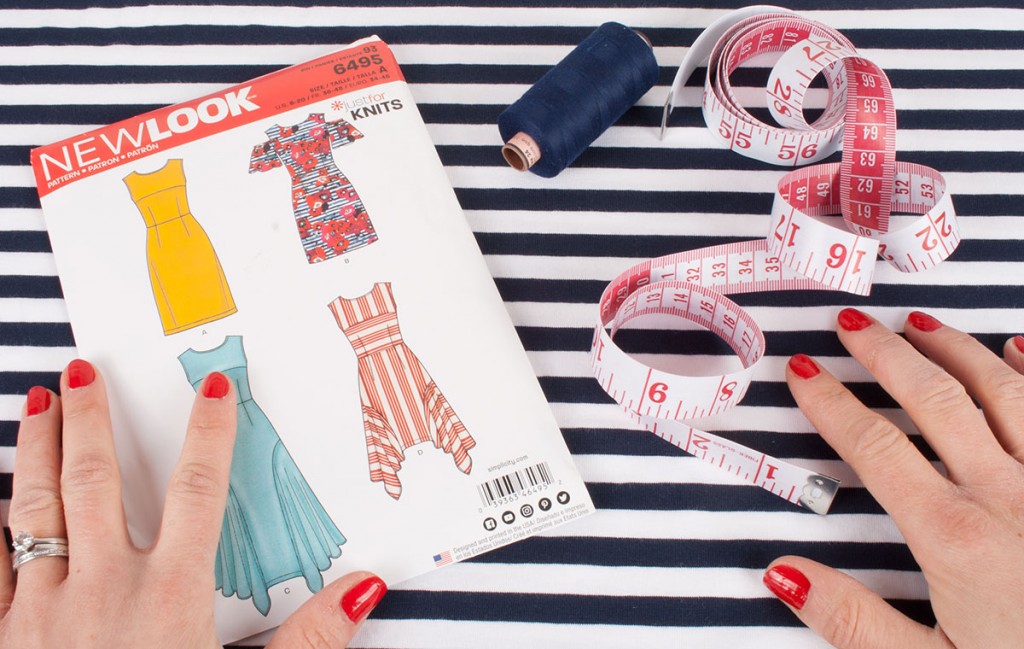
Choosing the Right Material for Different Occasions
When selecting materials for various occasions, it's essential to consider factors such as durability, appearance, comfort, and sustainability. Here’s a guide to help you choose between leather, canvas, and other common materials:
1. Everyday Use
- Leather: Ideal for items like wallets, belts, shoes, and bags. It offers durability, a sophisticated look, and longevity.
- Canvas: Suitable for casual bags, backpacks, sneakers, and jackets. It’s durable, easy to clean, and has a more relaxed, versatile appearance.
- Cotton: Great for everyday clothing like t-shirts, jeans, and casual dresses. It's comfortable, breathable, and easy to maintain.
2. Formal Occasions
- Leather: Perfect for formal shoes, belts, briefcases, and jackets. It provides a polished, classic look.
- Silk: Ideal for ties, scarves, blouses, and dresses. It has a luxurious feel and a smooth, elegant appearance.
- Wool: Suitable for suits, blazers, and coats. It offers a refined look, excellent insulation, and is breathable.
3. Outdoor Activities
- Canvas: Best for tents, outdoor gear, and backpacks due to its durability and resistance to harsh conditions. Treated canvas is water-resistant, making it ideal for camping and hiking.
- Nylon/Polyester: Commonly used in outdoor clothing, tents, and backpacks. These synthetic materials are lightweight, water-resistant, and quick-drying.
- Gore-Tex: Excellent for jackets and boots in wet or cold weather. It’s waterproof, windproof, and breathable.
4. Travel
- Leather: Good for travel accessories like luggage tags, passport holders, and carry-on bags. It’s durable and offers a timeless style.
- Canvas: Great for duffel bags, tote bags, and weekender bags. It’s sturdy and can withstand the rigors of travel.
- Polycarbonate/ABS: Ideal for hard-shell suitcases. These materials provide excellent protection for your belongings and are lightweight.
5. Sports and Fitness
- Synthetic Fabrics (Polyester, Spandex): Best for activewear such as leggings, shorts, and tops. They are stretchy, moisture-wicking, and durable.
- Mesh: Commonly used in sports shoes and activewear for breathability and lightweight comfort.
- Neoprene: Used in wetsuits and other water sports gear. It’s flexible, water-resistant, and provides insulation.
6. Sustainable Choices
- Recycled Materials: Look for items made from recycled polyester, nylon, or even leather. These options help reduce waste and environmental impact.
- Organic Cotton: A better choice for t-shirts, jeans, and other everyday clothing. It’s grown without harmful pesticides and fertilizers.
- Bamboo: Used in clothing, towels, and bedding. It’s sustainable, soft, and has natural antibacterial properties.
Summary
Choosing the right material depends on the occasion and the specific needs of the situation. Leather and silk are great for formal events, while canvas and synthetics excel in durability for casual and outdoor activities. Prioritizing sustainability by opting for recycled or organic materials can also guide your choices.
Comparing Leather and Canvas - What is the Optimal Choice for Your Next Bag?
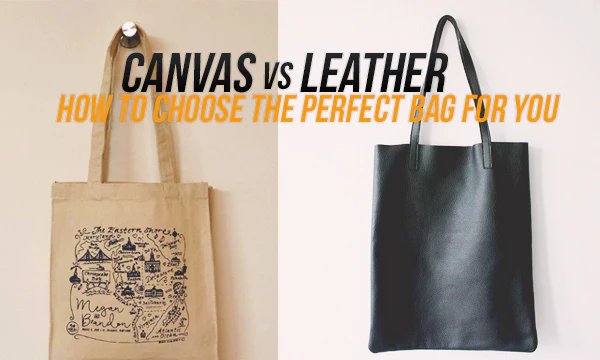
Comparing Leather and Canvas for Your Next Bag
When deciding between leather and canvas for your next bag, consider various factors such as durability, look & feel, care, and sustainability. Here’s a detailed comparison to help you make an informed choice:
Leather
Pros:
- Durability: Leather is exceptionally durable, often outlasting many other materials. It can withstand significant wear and tear, making it ideal for long-term use.
- Look & Feel: Leather has a luxurious and sophisticated appearance. It feels smooth and supple, and often develops a unique patina over time that adds to its charm.
- Strength: Leather is strong and can carry heavier items without losing its shape.
- Prestige: Leather bags are often seen as high-end and premium, adding a touch of elegance to your style.
Cons:
- Care: Leather requires regular maintenance, including cleaning and conditioning, to keep it from drying out and cracking.
- Weight: Leather bags tend to be heavier than canvas bags.
- Cost: High-quality leather is usually more expensive than canvas.
- Ethical Concerns: Leather production involves animal hides and can have significant environmental impacts, depending on the tanning process used.
Canvas
Pros:
- Durability: Canvas is durable and resistant to tearing. Treated canvas can be water-resistant or even waterproof.
- Look & Feel: Canvas offers a casual, rugged look. It can be dyed in various colors and printed with patterns, offering more versatility in style.
- Lightweight: Canvas is generally lighter than leather, making it more comfortable to carry, especially for longer periods.
- Care: Canvas is relatively easy to clean and maintain. Most canvas bags can be spot cleaned or even machine washed, depending on the treatment.
- Cost: Canvas is typically more affordable than leather.
- Sustainability: Canvas made from natural fibers like cotton or linen is biodegradable and can be more eco-friendly, especially if organic or recycled materials are used.
Cons:
- Appearance Over Time: Canvas may not age as gracefully as leather. It can become worn or faded with heavy use.
- Strength: While durable, canvas may not support heavy loads as well as leather.
- Casual Look: Canvas has a more casual appearance, which may not be suitable for all occasions or preferences.
Optimal Choice for Your Next Bag
Consider the following scenarios to determine the best choice:
- If you need a bag for formal or professional settings: Choose leather. It offers a sophisticated, polished look that complements formal attire and professional environments.
- If you need a bag for casual, everyday use: Choose canvas. It’s lightweight, versatile, and easy to clean, making it perfect for daily activities, travel, and outdoor adventures.
- If sustainability is a priority: Choose canvas, especially if it’s made from organic or recycled materials. This supports eco-friendly practices and reduces environmental impact.
- If you need a durable and long-lasting bag: Choose leather. Its strength and ability to age well make it a great investment for a long-term use.
Conclusion
The optimal choice between leather and canvas depends on your specific needs and preferences. Leather is ideal for formal occasions and offers a luxurious, durable option, while canvas is great for casual use, being lightweight and easy to maintain. Consider your lifestyle, how you intend to use the bag, and your values regarding sustainability and ethical concerns to make the best decision.
Canvas Bags
Pros
Lightweight And Versatile: Canvas is much lighter and easier to carry compared to leather. It is also more versatile, allowing manufacturers to create a wide variety of shapes and styles for different purposes and occasions.
Durable And Sturdy: The plain-woven fabric of canvas provides strength and sturdiness. It bends and conforms to the weight and size of the goods within, allowing it to handle hefty items without readily ripping.
Fashion Versatility: Canvas bags come in various styles, colors, prints, and patterns. Canvas tote bags, messenger bags, travel bags, and other items are easily available, allowing you to show your style and individuality.
Low Maintenance: Canvas bags generally require little maintenance. They are easy to clean in a washing machine or with a bristle brush or damp cloth. You can also use specialized sprays to enhance their durability.
Eco-Friendly: Canvas is an environmentally friendly textile that is gaining popularity in a society concerned with sustainability and animal welfare.
Waterproof Options: Despite not being inherently waterproof, there are methods to render canvas bags waterproof and resilient to the elements.
Cons
Casual Appearance: Canvas bags have a sporty, dynamic look and are more casual in appearance, making them ideal for young urban people and casual events.
Not Formal Business Attire: While some designer brands use canvas for label bags, it is not considered formal business attire like leather.
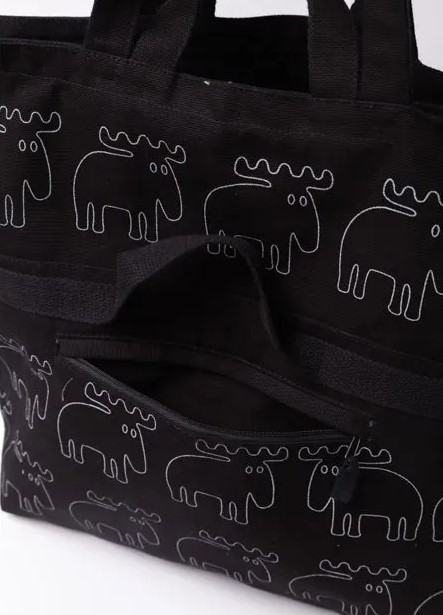
Leather Bags
Pros
Timeless Elegance and Durability: Leather bags are ageless and provide long-lasting service. They can withstand harsh handling and big weights without becoming clogged.
Refined Look with Patina: Leather gets softer and gains a refined look with age due to the development of a patina, enhancing its vintage appeal. The leather of high quality is a symbol of elegance and luxury.
Cons
Water Absorption: Contrary to common perception, high-quality leather that has not been chemically treated absorbs water quicker than waxed canvas. Waterproofing leather might cause it to lose its patina.
High Maintenance: Leather purses demand more upkeep than canvas bags. They rapidly collect stains and oils and must be cleaned on a regular basis with dry or slightly wet rags.
Prone to Drying Out: Leather can dry out quickly, necessitating the use of leather-enhancing products and conditioners.
Professional Repairs: Unlike canvas, leather repairs require professional handling for scratches, wear, and tear.
Less Eco-Friendly and Expensive: Leather products are not eco-friendly and are generally more expensive than canvas alternatives.
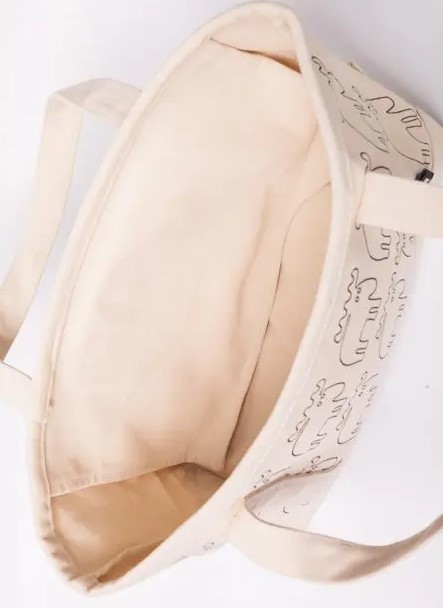
Canvas Vs Leather: What Bag To Choose?
Here are some tips as the following:
Occasion And Style
When deciding between canvas and leather bags, consider the occasion and your personal style preferences. Canvas bags are more suitable for casual and laid-back occasions. They offer an athletic and young look that makes them ideal for everyday use, weekend activities, and vacations to the beach. On the other hand, leather bags exude elegance and sophistication, making them ideal for formal events, business meetings, or any occasion where you want to make a statement with your attire.
Functionality And Durability
Both canvas and leather bags are durable and can handle different levels of wear and tear. Canvas bags are known for their exceptional strength, flexibility, and ability to carry heavy items without tearing. They are great for carrying groceries, books, and other everyday essentials. Leather bags, especially high-quality ones, are similarly robust and resistant to wear and tear. They develop a distinct patina over time, which adds to their allure and endurance. If you want a long-lasting item, leather bags are an excellent investment.
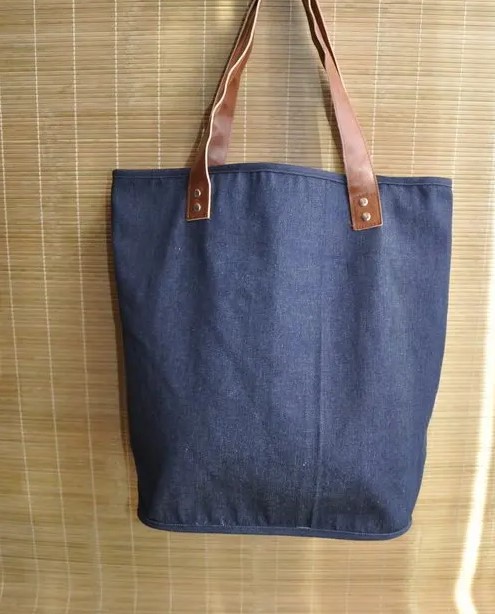
Maintenance And Care
Consider the level of maintenance and care you are willing to put into your bag. Canvas bags are generally low-maintenance and easy to clean. You can toss them in the washing machine or wipe them with a damp cloth to keep them looking fresh. Leather bags, on the other hand, need more attention and care. They acquire stains and oils easily and must be cleaned and conditioned on a regular basis to keep their shine and prevent drying out.
Environmental Impact
For environmentally-conscious individuals, the choice between canvas and leather becomes even more critical. Canvas is considered more eco-friendly as it is often made from natural fibers and doesn't involve the use of animal products. On the other hand, leather production raises concerns about animal welfare and the environmental impact of the tanning process. If sustainability is a priority for you, canvas might be the preferred option.
Conclusion
Both canvas and leather bags have their unique qualities and advantages. Consider the above factors to make the best choice for your needs. Besides, if you are looking for high-quality canvas bags, look no further than Neway. Browse our website for more product details!

